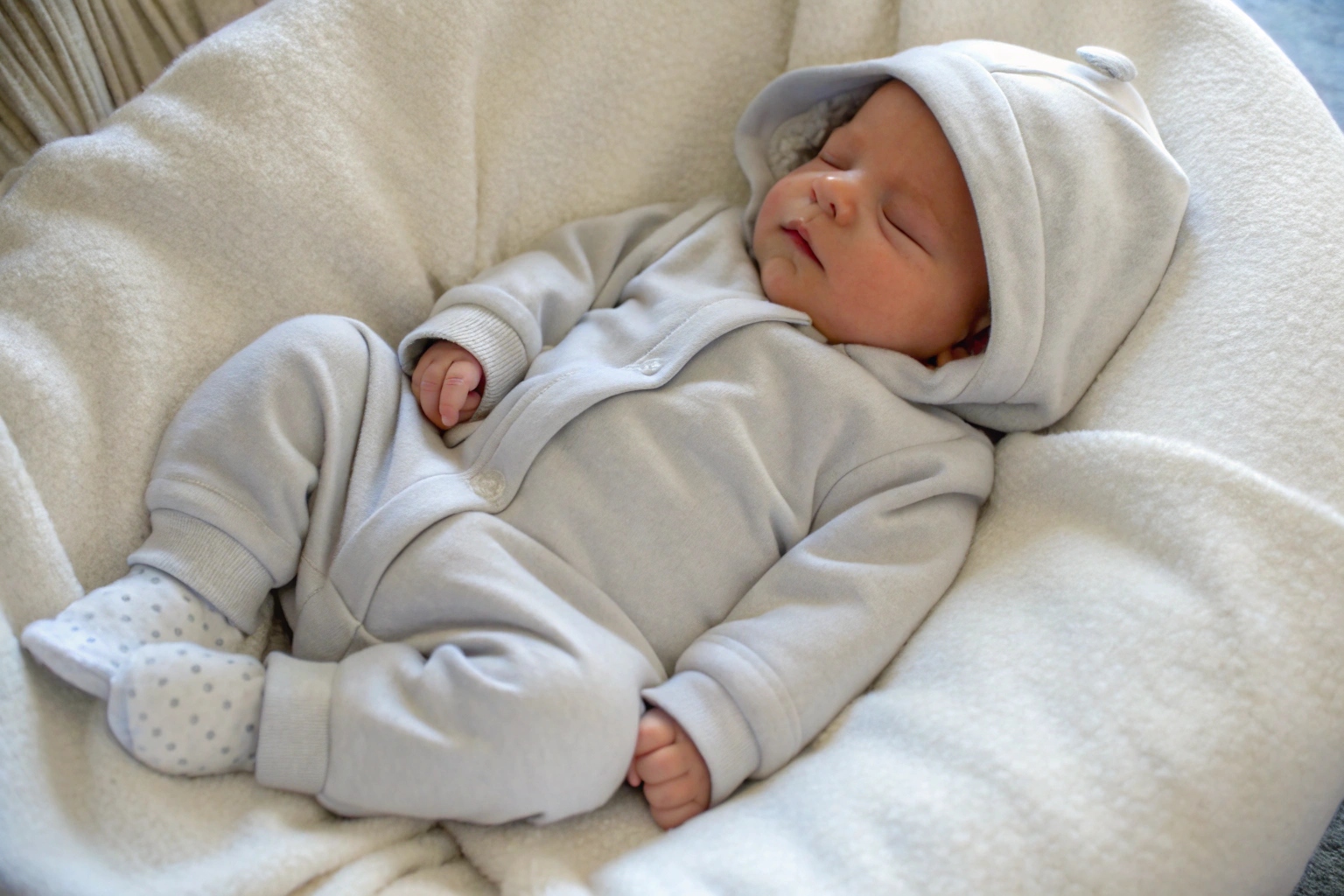Baby clothing sizes can be confusing. One label says “9M,” another says “6–9 months,” and your baby doesn’t seem to fit either one perfectly.
Babies typically fit into size 9 clothing between 6 to 9 months old, but sizing varies by brand and depends more on your baby’s weight and height than age alone.
In this article, I’ll explain when babies usually wear size 9, how to know when they’re ready to size up, and how to get the best fit for every stage.
What Age Is Size 9 Baby Clothing For?
There’s no universal “size 9” standard—most brands label this range as “6–9 months.” But growth rates vary widely from baby to baby.
Size 9 baby clothing is generally designed for babies aged 6 to 9 months, usually fitting babies who weigh 17–21 pounds and are 26–28 inches tall.
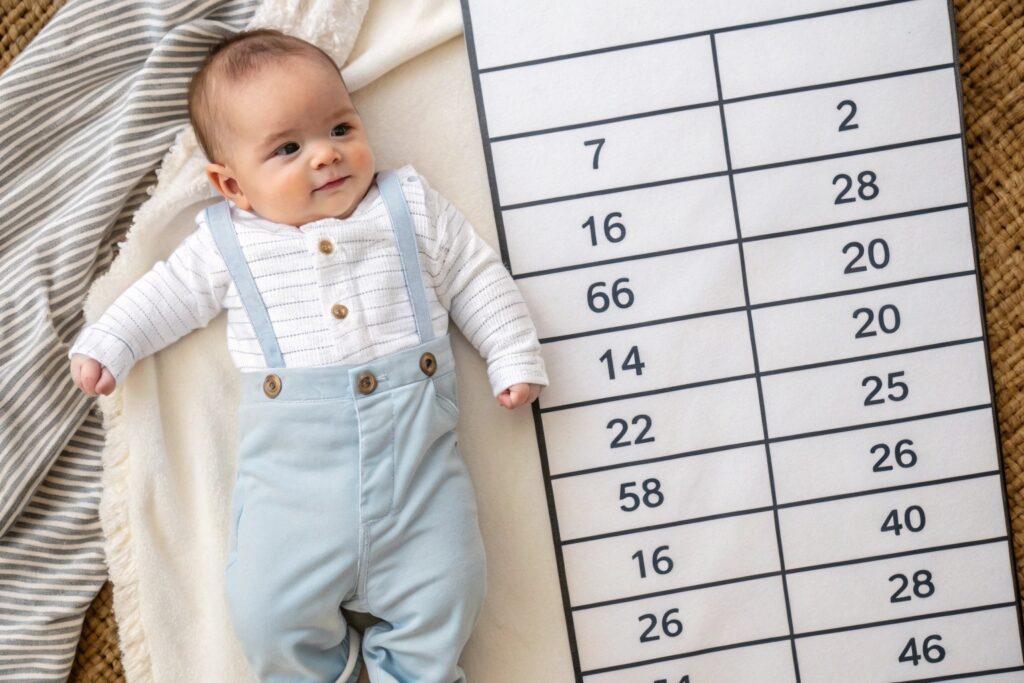
General sizing reference:
| Size Label | Age Range | Weight Range | Height Range |
|---|---|---|---|
| 3–6 months | 3–6 months | 12–17 lbs | 23–26 inches |
| 6–9 months (9M) | 6–9 months | 17–21 lbs | 26–28 inches |
| 9–12 months | 9–12 months | 21–25 lbs | 28–30 inches |
Keep in mind:
- Some babies outgrow “6–9M” by 5 months
- Others may still wear it at 10 months if they’re petite
- Diaper size, head size, and mobility also affect clothing fit
At Fumao, our sizing charts are based on real baby fit models—not just weight tables—so brands can offer a better experience for parents.
How Baby Clothing Sizes Vary by Brand?
Even if two brands both say “6–9 months,” the sizing may be totally different in real life.
Baby clothing sizes vary widely between brands due to different measurement standards, fabric stretch, country of origin, and style fit. One brand’s 9M may be another’s 6M or 12M.
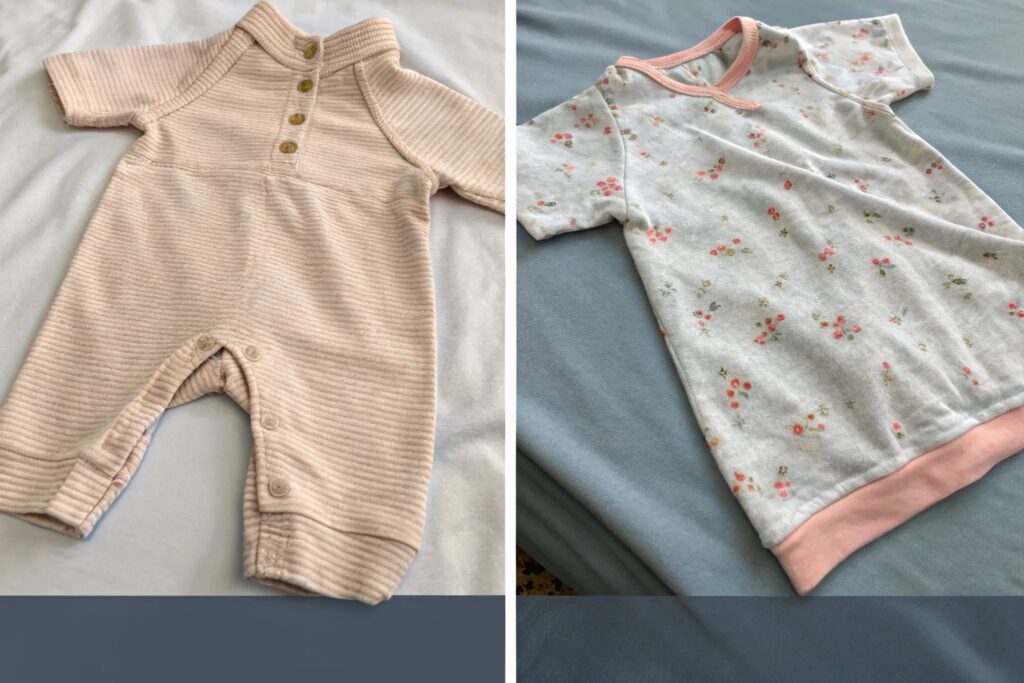
Real-world brand differences:
| Brand | Size 6–9M Weight Range | Notable Fit Features |
|---|---|---|
| Carter’s | 16.5–20.5 lbs | Slim fit, soft cotton |
| Gerber | 17–22 lbs | Tighter across chest/shoulders |
| H&M Baby | 18–20 lbs | Runs large, wider cut |
| Old Navy | 17–21 lbs | Stretchy knits, average sizing |
| Boutique brands | Often smaller cuts | May prioritize style over fit |
Other factors:
- Fabric type: Ribbed cotton stretches more than woven fabric
- Cut/style: Slim-fit rompers vs roomy playwear
- Country sizing: European 74 = U.S. 6–9 months
If your baby is in between sizes, size up—especially if laundry shrinkage or layering is a concern.
Signs Your Baby Is Ready for Size 9 Clothes?
How do you know when it’s time to move your baby into a new size? Fit isn’t just about age.
Your baby is ready for size 9 clothing if current clothes feel tight at the shoulders or thighs, snap closures are hard to close, or the outfit pulls up when crawling or stretching.
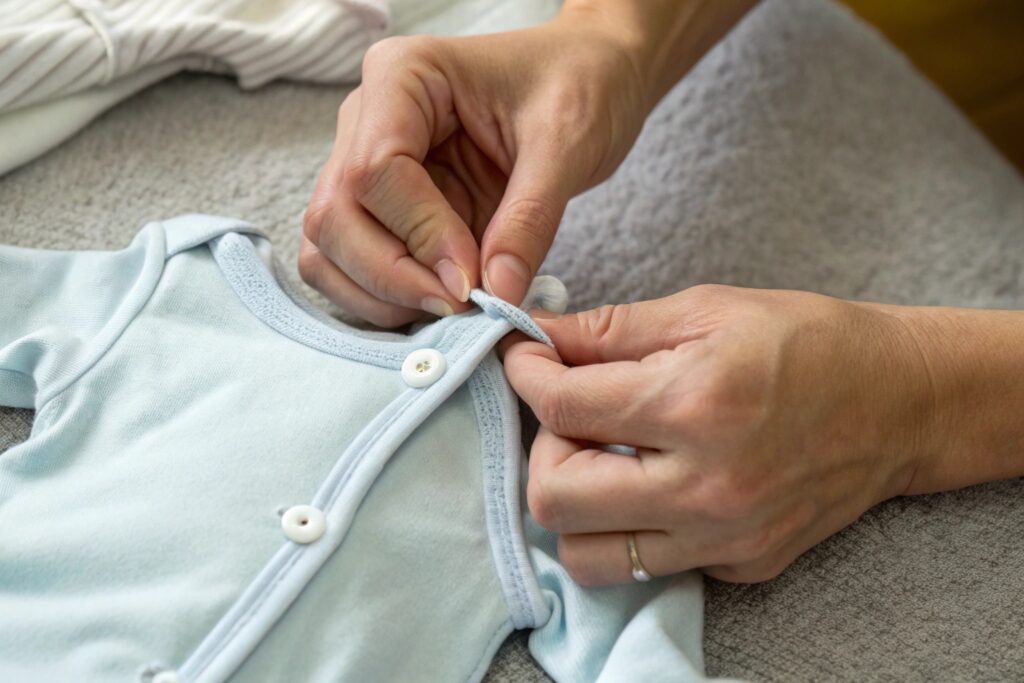
Key signs it’s time to size up:
| Area | What to Watch For |
|---|---|
| Shoulder seams | Don’t align with the top of the arm |
| Snap closures | Feel tight between the legs or won’t snap |
| Pant legs | Too short or rise keeps slipping down |
| Belly fit | Too snug over diaper area |
| Neckline | Struggles to go over baby’s head |
Bonus tip:
- Try clothes on over a clean diaper to check real-life fit
- Stretch fabric = more flexibility, but don’t wait for total tightness to size up
At Fumao, we design babywear with soft neck openings, generous seat room, and stretch seams—making it easier for babies to wear their clothes longer, comfortably.
How to Measure Your Baby for the Right Fit?
Sizing charts are only helpful if you know how to measure your baby accurately.
To measure your baby for clothes, check their height from head to heel, weight with a baby scale, and chest and waist with soft measuring tape. Compare the numbers to the brand’s size guide.
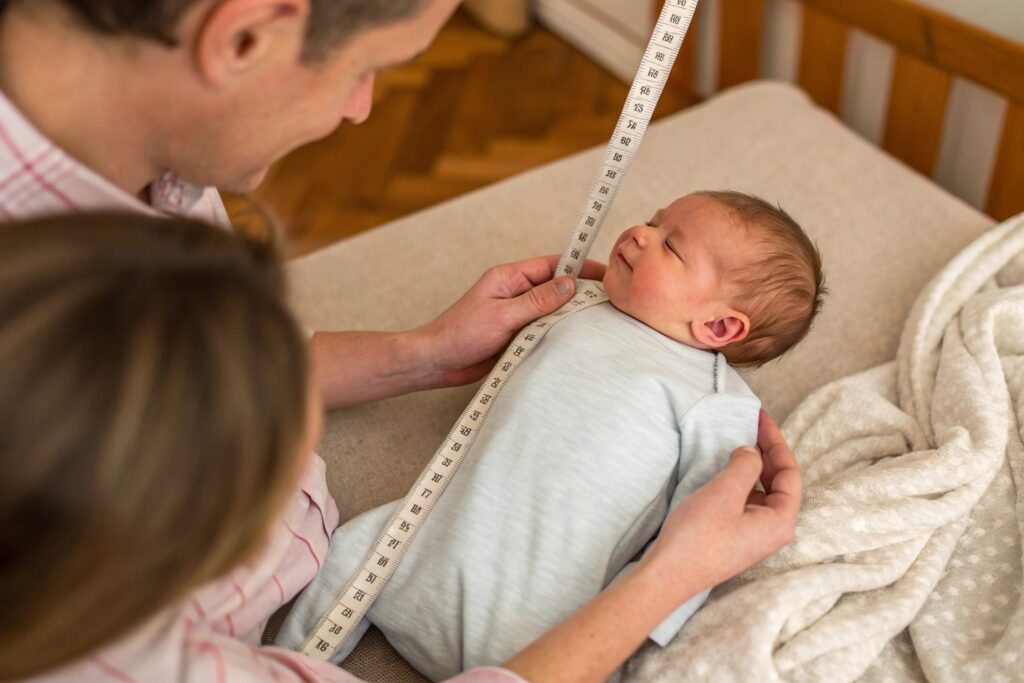
How to take measurements:
| Measurement Type | How to Measure |
|---|---|
| Height | Lay baby flat and measure head to heel |
| Weight | Use baby scale or subtract parent + baby – parent weight on adult scale |
| Chest | Wrap tape around widest part of chest |
| Waist | Measure around belly button level |
Tips for accuracy:
- Measure when baby is calm or post-nap
- Use centimeters if the brand is European (e.g. size 74 = 6–9M)
- Always round up if between sizes
Fumao includes full measurement charts for each item we produce—so buyers, brands, and parents all know what to expect before ordering.
Conclusion
Babies usually fit into size 9 between 6 and 9 months old, but sizing depends on body shape, brand, and fabric. Always use your baby’s measurements and fit cues to guide your choice—not just age on the tag. With the right sizing knowledge and soft, flexible garments, your baby will stay comfy through every growth stage.

